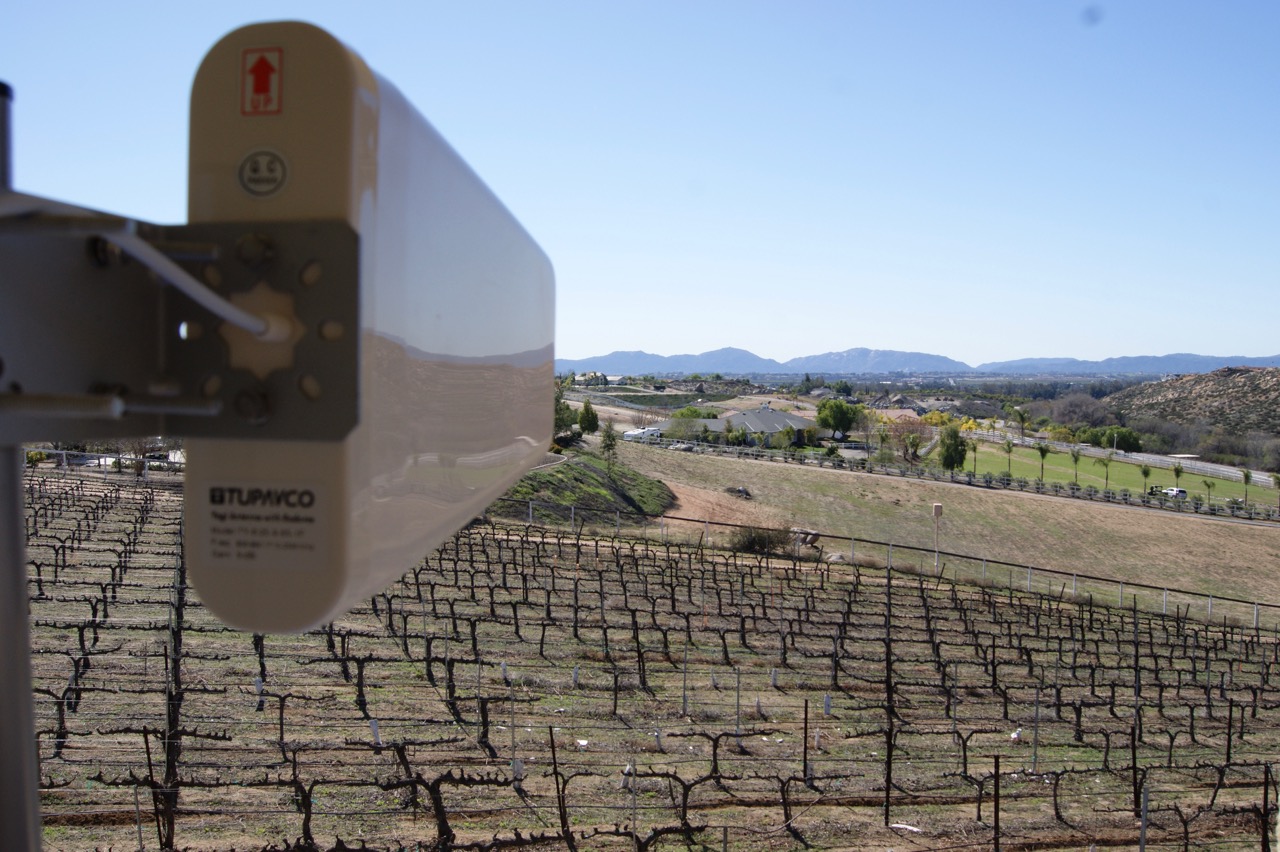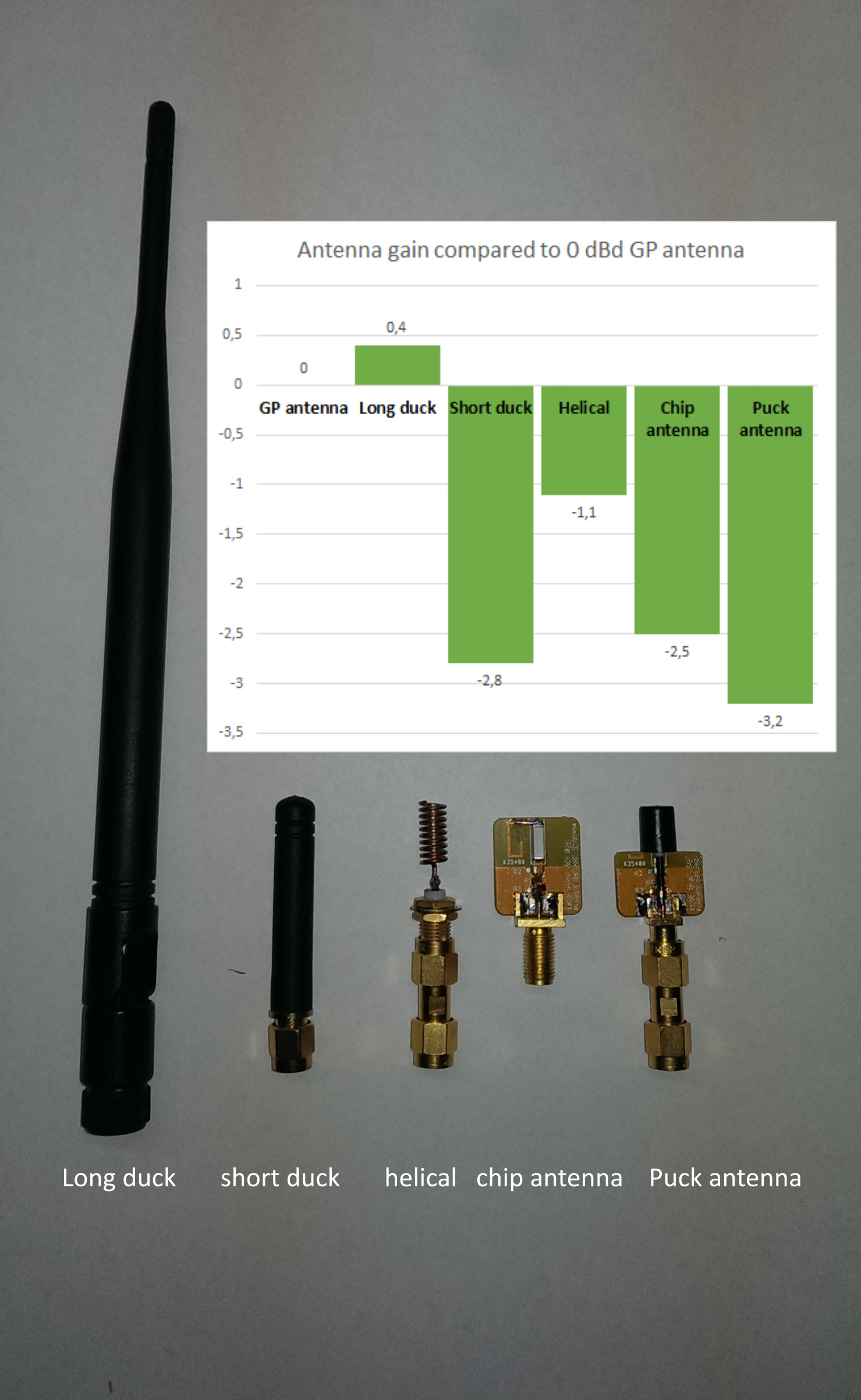yes it works, like for example parking sensors… but limited distance
Typically, we need to have line of sight connections. Higher is better, also because of the earth’s surface curvature. Our units are installed above the canopy of grape vines. Trees and crops attenuate the signal at 900 MHz, a lower operating frequency would have been better for agricultural applications.
Because we have hills here, we cannot always get line of sight and need multiple gateways. The small femto gateways that are coming out seem ideal for that.
We have one station that has no line of sight, it’s behind a hill, but reflects off a nearby mountain to get the signal to the gateway. Reflection is likely how the signal still can get some distance from a manhole.
Hi BoRRoZ
Do you have any results with these yagi antennas?
I ordered parts for yagi antenna from local hardware store. Unfortunately I dont have enough time to build and test it.
I’ve had the 11 dbi connected a while ago but I didn’t test the 13 db yet, that one have more elements (duh) but the overall length is shorter
so if you have stationary node(s) in a field far away …
I had good range results with this type of Yagi directional antenna too. It was available on Amazon for $30, and I’ve seen many similar offerings. Data sheet gain is around 10dB.
I like the fact that the antenna is in an enclosure, keeping rain and ice away which can detune . Not that we have that problem in Southern California BTW.

never seen before… enclosed small yagi … and affordable 
Here are some links, noticed price has gone up a bit since last year.
http://a.co/fmCc95g
http://a.co/4nWyM7h
Not my cup of tea, but in case it matters:
I am a Chinese any problem about Chinese. I can help even Buy things from TAOBAO or call someone for local business. I can help to delivery the message.
Hi Arjan, good point for Europe, in the USA max power allowed is 27 dBm. The FCC regulatory spec for the Multitech Conduit states 7 dBi for max antenna gain and cable losses combined.
3 meter of RG58 cable inserts 2 dB loss, so with a 9 dBi antenna, I should be good on meeting regulatory requirements.
Especially when the spectrum is crowded, directional antenna can be useful for suppressing unwanted signals.
I have some questions about Ground Planes:
- When using a (metal) ground plane in combination with a mono pole antenna, should the ground plane be connected to the antenna’s ground (outer wire) or should they not be connected?
- Wat are ideal and practical distances between antenna and ground plane?
- Is it best to use a round ground plane?
- Wat is the best practical size for a ground plane?
- How big is the effect of the size of the ground plane on the vertical radiation (coverage of area below the antenna) when the antenna is not placed near ground level but a few floors high or on the roof (in order to still have reach on the lower floors)?
Today I measured the antenna gain of some popular 868 MHz antenna’s. Here are the results:
Antenna type Gain [dB]
GP antenna 0
Long duck 0,4
Short duck -2,8
Helical -1,1
Chip antenna -2,5
Puck antenna -3,2
Bare in mind that these measurements are an indication. Total radiated power (TRP) may differ.

wow… that’s not very good.
what should they be, according to the seller(s) ?
GP 0 is correct off course
well, I assume that the GP antenna is 0 dBd. The GP antenna is held as reference.
Out of curiosity, what was the measurement methodology ?
I used e GTem cel and measured 3 axis. The figures presented are only the most relevant axis.
This setup produces a good indication.
It is better to perform TRP measurements or a tradtional antenna gain measurement on a OAT.
Thank you very much for the answer… but sorry that didn’t make any sense to me, and google seems to fail helping me there.
May I ask you - or anyone who knows - to provide some link or pointer about this ?